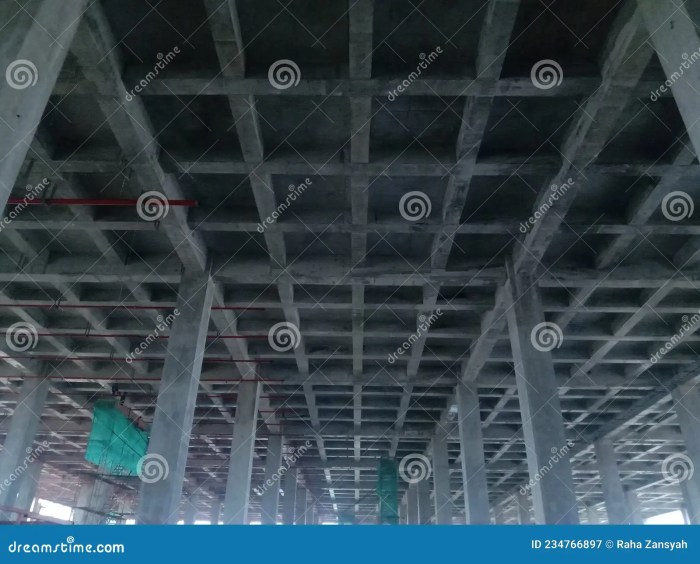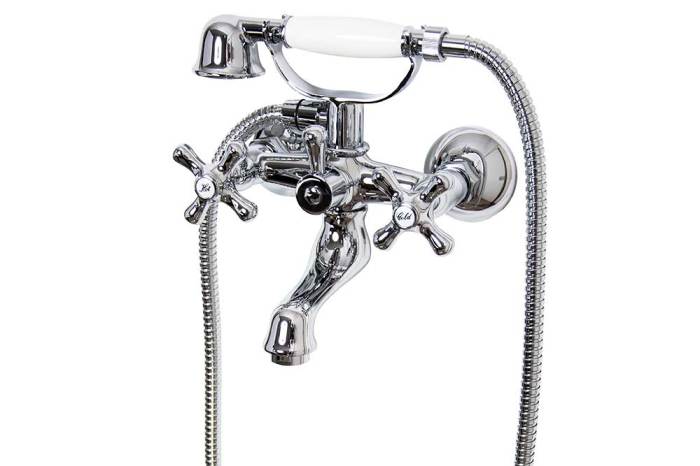
Welcome to the plush paradise of Carpet flooring, where every step feels like a hug for your feet! Imagine sinking into a cloud of fabric every time you enter a room, transforming your home into a cozy haven. From luxurious textures to vibrant colors, carpet flooring isn’t just about decoration—it’s about creating an atmosphere that whispers comfort and warmth.
In this adventure, we’ll unravel the mysteries of carpet flooring, exploring the various materials that contribute to its charm, the installation dance that it requires, and the secret life of maintaining these soft surfaces. Whether you’re a DIY enthusiast or someone who just enjoys lounging on soft carpets, there’s something here for everyone!
Carpet Flooring Overview

Carpet flooring, often the plush hug your feet didn’t know they were missing, is a versatile option that combines comfort and style in a cozy embrace. With its ability to transform any room into a warm sanctuary, carpet flooring stands out not only for its aesthetic appeal but also for its functional benefits. From sound absorption to thermal protection, carpet has your back (and your toes).
Several materials are used to create carpet, each with its own merits, helping you choose the perfect fit for your needs. The main types include nylon, polyester, olefin, and wool. Each material offers unique advantages, such as durability, stain resistance, and softness, turning your flooring decisions into a delightful adventure instead of a daunting task.
Types of Carpet Materials
Understanding the types of carpet materials available is essential to making an informed choice. Each material has its pros and cons, which can significantly influence your flooring experience. Here’s a breakdown of the most common materials you’ll encounter:
- Nylon: Known for its durability and resilience, nylon is the superhero of carpet materials. It resists crushing and is ideal for high-traffic areas, making it a wise choice for busy households or those with mischievous pets.
- Polyester: If your wallet is on a diet, polyester carpets are your best friend. They are generally more affordable, have a soft feel, and come in a rainbow of colors, but they may not stand the test of time as well as nylon.
- Olefin: This material is the champion of moisture resistance, making it perfect for areas prone to spills (like your kid’s juice box explosion zone). It’s a popular choice for outdoor spaces and basements.
- Wool: The crème de la crème of carpet materials, wool offers unmatched luxury and comfort. While it may come with a higher price tag, its natural stain resistance and durability make it an investment worth considering.
Installation Process of Carpet Flooring
Installing carpet flooring isn’t just about roll out and stick down; it’s an art form that requires a touch of finesse and a sprinkle of magic. The process generally involves several key steps to ensure that your carpet fits like a glove and looks fabulous.
1. Preparation
Clear the space of any furniture, pets, or lingering relatives. The subfloor should be clean, dry, and level, like a well-behaved child at a family gathering.
2. Measuring
Accurate measurements are crucial. A tape measure is your trusty sidekick here, ensuring you purchase enough carpet to cover your floors without having to play puzzle master with leftover scraps.
3. Underlayment (Optional)
Consider adding an underlayment for extra comfort and sound insulation. This step is like laying a fluffy cloud beneath your feet.
4. Installing the Tack Strips
Tack strips are the unsung heroes that hold your carpet in place. Nail them around the perimeter of the room, leaving a small gap from the wall for a snug fit.
5. Laying the Carpet
Roll out the carpet and trim it to fit the room. This is where the magic happens; a little tug here, a little trim there, and voilà! You’ve got a carpet that speaks the language of style.
6. Stretching the Carpet
Using a power stretcher, pull the carpet tight to eliminate wrinkles. Think of it as giving your carpet a well-deserved spa treatment.
7. Trimming and Finishing
Finally, trim the excess carpet at the edges, tuck it under the baseboards, and secure it. Stand back and admire your handiwork as you revel in the new plush terrain of your home.
A well-installed carpet can enhance the look and feel of any space, turning an ordinary room into an extraordinary retreat.
Home Improvement with Carpet Flooring

Transforming your home with carpet flooring is like dressing your floors in their Sunday best—comfortable, stylish, and perfect for entertaining! Whether you’re channeling a cozy cottage vibe or a modern minimalist look, carpet flooring can add warmth and charm to any space. Let’s dive into how you can integrate this versatile flooring option into your home and make it truly shine.
Integrating Carpet Flooring into Various Home Styles
Selecting the right carpet for your home style is crucial for achieving a harmonious look. Here are some tips to help you seamlessly blend carpet into different décor themes:
- Traditional Style: Opt for rich, deep colors and intricate patterns to complement ornate furniture. A plush, patterned carpet can enhance the elegance of a classic setting.
- Contemporary Style: Go for solid colors or geometric patterns in neutral tones. Short pile carpets work wonders in modern spaces, offering a sleek finish without overwhelming your design.
- Eclectic Style: Mix and match bold colors and textures! An area rug with a funky design can act as a statement piece that ties various elements together in an unexpected way.
- Rustic Style: Choose carpets in earthy tones and natural fibers. A jute or sisal carpet can bring a touch of the outdoors inside, making your space feel grounded and cozy.
This careful selection of carpet can elevate your home’s aesthetic and ensure that your floors match the love and effort you’ve put into your space.
Selecting the Right Carpet Flooring for Different Rooms
Choosing the right carpet for each room is like picking the perfect outfit for different occasions—it’s all about the right fit! Here’s a breakdown of how to choose wisely:
- Living Room: Look for durable carpets that can withstand foot traffic. A soft, stain-resistant option will keep your space looking fresh and inviting, even after that inevitable snack spill during movie night.
- Bedroom: Prioritize comfort! Opt for thick, plush carpets that feel luxurious underfoot, making your morning routine a little more bearable.
- Children’s Room: Go for a low-pile carpet that’s easy to clean and can handle the wear and tear of energetic playdates. Bright colors or fun patterns can add a playful touch!
- Home Office: Choose a carpet with sound-dampening qualities to keep your workspace serene. A neutral hue can help maintain focus while adding a touch of sophistication.
Making room-by-room decisions will ensure that your carpet flooring serves its purpose while keeping each space stylish and practical.
Comparison of Carpet Flooring versus Other Flooring Options
When considering flooring options, it’s helpful to weigh the pros and cons. Here’s how carpet flooring stacks up against other popular choices:
| Flooring Type | Pros | Cons |
|---|---|---|
| Carpet | Soft, warm, sound-dampening, available in various styles | Can stain, requires regular cleaning, may harbor allergens |
| Hardwood | Durable, timeless, adds value to home | Can be scratched, noisy, expensive to install |
| Tile | Water-resistant, durable, easy to clean | Cold underfoot, can be slippery, hard to install |
| Laminate | Cost-effective, easy installation, many styles | Can look less authentic, prone to wear over time |
In the grand arena of flooring, carpet flooring brings a unique blend of comfort and style that can be hard to beat, especially in spaces where warmth and coziness are key. It’s not just about choosing flooring; it’s about creating an inviting atmosphere that reflects your personal style—and let’s face it, who doesn’t want to roll around on a soft carpet at the end of a long day?
Maintenance and Care for Carpet Flooring
Proper maintenance and care of carpet flooring is akin to giving your beloved rug a spa day—because, let’s face it, no one wants a sad, dingy carpet lurking in the corner, avoiding eye contact. A little bit of TLC can go a long way in keeping your carpets looking spick and span, while also extending their lifespan so they can endure all those dance parties and pet antics.To ensure your carpet flooring remains in tip-top shape, regular cleaning and prompt attention to spills and stains are essential.
Here are some invaluable tips and tricks that will have your carpet looking fresher than a field of daisies after a spring rain.
Cleaning Tips for Carpet Longevity
Maintaining your carpet isn’t just about the occasional vacuum; it’s a full-time job that requires dedication and a few nifty tricks. Here’s how to keep your carpet flooring in pristine condition:
- Regular Vacuuming: Aim to vacuum at least once a week. This is your carpet’s workout session that helps it shed dirt and dust. Use a vacuum with a HEPA filter for those extra allergens trying to crash the party.
- Spot Cleaning: Don’t let stains linger like an unwanted houseguest. Blot spills immediately with a clean, dry cloth and use a carpet cleaner solution if necessary. Remember, patting is the name of the game—scrubbing is just going to make things worse.
- Deep Cleaning: Schedule a deep clean every 6 to 12 months. This can be done using a rental steam cleaner or by hiring a professional service. Your carpet will feel like it just came back from an all-inclusive resort!
- Rotate Furniture: Change the arrangement of your furniture periodically. This helps prevent uneven wear and tear on your carpet, giving every spot a chance to shine.
- Use Doormats: Place doormats at entryways to reduce the amount of dirt tracked in. Think of them as your carpet’s bouncers, keeping unwelcome messes at bay.
Methods for Addressing Common Carpet Stains
Accidents happen, and when they do, having a plan to tackle those pesky stains is crucial. Here’s how to address some of the more common culprits that might leave their mark:
- Red Wine: Ah, the classic carpet disaster. Blot with a clean cloth, then sprinkle salt on the stain to absorb the wine. Rinse with a mixture of vinegar and water to finish the job.
- Pet Stains: For those furry friends who sometimes forget their manners, use an enzyme cleaner specifically designed to eliminate odors and stains. This will ensure your carpet remains smelling like a rose rather than an embarrassing episode.
- Ink: Fear not! Dab a cloth with rubbing alcohol and gently blot the ink stain. With a bit of patience, you can reclaim that spot, and you might even feel like a magician!
- Food Stains: For those delightful moments when snacks go rogue, mix a tablespoon of dish soap with a cup of warm water, dab the stain, and rinse. Your carpet will thank you with its gratitude!
Tools and Appliances for Effective Carpet Cleaning
Having the right tools is half the battle when it comes to maintaining your carpet flooring. Here’s a list of must-have equipment that will make your cleaning endeavors easier and more effective:
- Vacuum Cleaner: Invest in a quality vacuum that suits your carpet type. Models with rotating brushes are fantastic for deep cleaning.
- Carpet Cleaner: Portable carpet cleaners are lifesavers for quick clean-ups. They’re like your trusty sidekick during battle against spills!
- Lint Roller: For quick touch-ups, a lint roller can be an unsung hero, especially for pet owners. It’s like magic for picking up those stray hairs!
- Steam Cleaner: A steam cleaner offers a deep clean without harsh chemicals. Think of it as a mini sauna for your carpet.
- Cleaning Solutions: Stock up on various carpet cleaning solutions, especially those that are eco-friendly. Your carpet, and the planet, will appreciate it!
Keeping your carpet flooring looking fresh and fabulous is a delightful mix of regular maintenance and quick action against stains. With the right tools and a sprinkle of humor, your carpets will not only endure the test of time but will also make your home a cozy and welcoming space.
Ending Remarks
As we wrap up our journey through the world of Carpet flooring, it becomes clear that this isn’t just about choosing a floor—it’s about crafting an experience. With the right material, installation, and care, your carpet can stand the test of time (and kids, and pets, and the occasional spilled soda). So go ahead, embrace the fluff, and let your home be a cozy retreat where every step feels like a celebration!
Question & Answer Hub
What are the main types of carpet materials?
The main types include nylon, polyester, olefin, and wool, each offering unique benefits like durability, stain resistance, and comfort.
Can I install carpet flooring myself?
Yes, with the right tools and a bit of patience, DIY installation is possible, though hiring professionals can ensure a perfect fit.
How do I remove stubborn stains from carpet?
For tough stains, blot the area with a mixture of vinegar and water or use a specialized carpet cleaner, but always test a small area first!
How often should I clean my carpet?
Regular vacuuming is essential, but aim for a deep clean every 6-12 months to keep your carpet looking fresh.
Is carpet flooring suitable for high-traffic areas?
Absolutely! Opt for durable materials like nylon or looped carpets designed to withstand heavy foot traffic.











